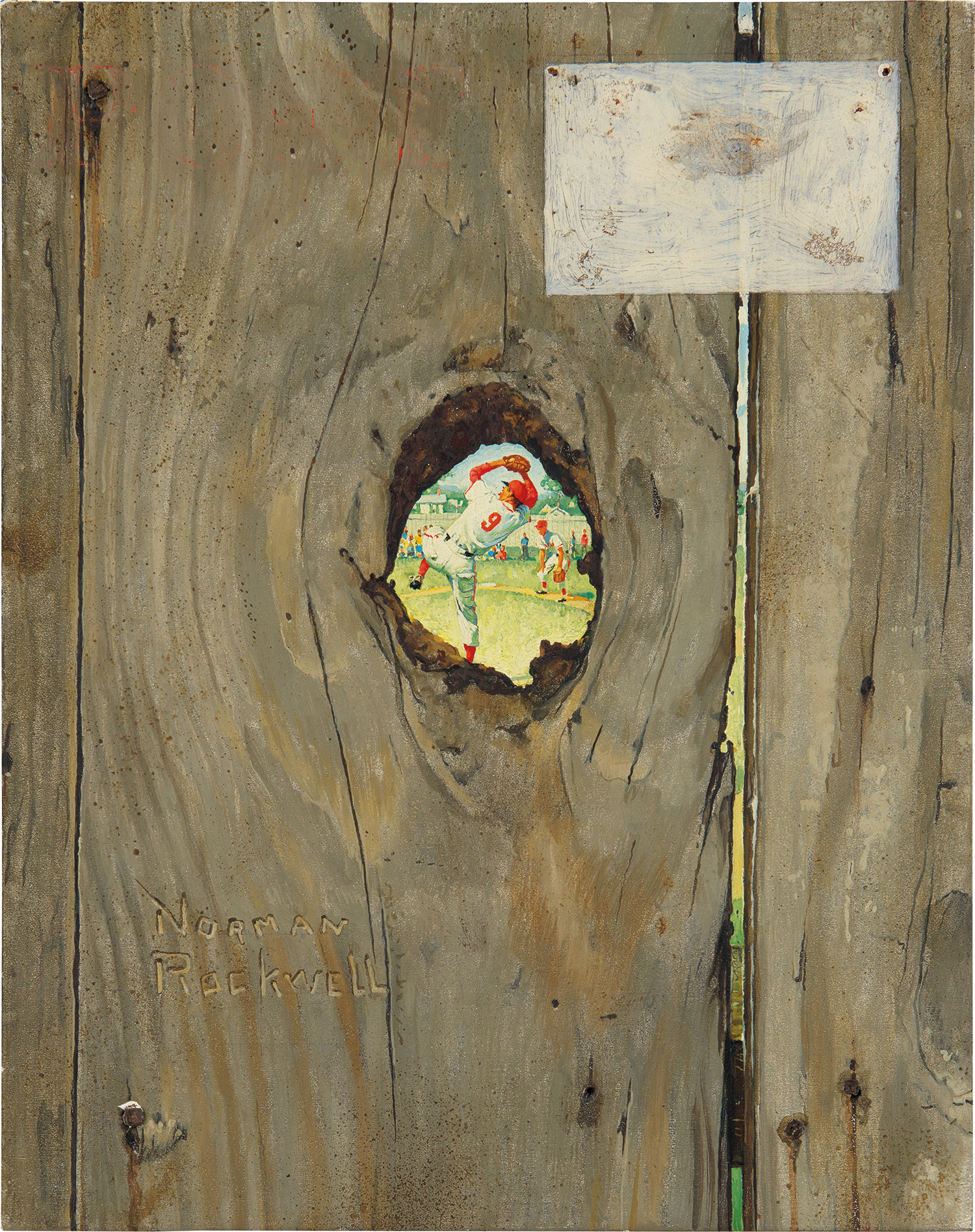

13
Norman Rockwell
The Peephole
This work is accompanied by an original copy of the August 30, 1958 issue of The Saturday Evening Post.
Further Details
Full-Cataloguing
Norman Rockwell
Few artists have made as much of an impact on the American visual culture as Norman Rockwell. A master draughtsman and a keen observer of the quotidian, Rockwell produced an immense body of work noted for its vivid and loving depictions of the everyday graces of mid-20th century life, providing the pictorial framework for how Americans conceive of themselves then and today. His aspirational paintings lifted the American spirit during its darkest times but to this day reassure people worldwide of the fundamental values universal truths.
Rockwell’s long and prodigious career began when he was only 22, when he contributed his first cover to The Saturday Evening Post. This precocious achievement presaged not only the artist’s immense successes contributing another 321 covers for this hugely-circulated magazine, the body of work that cemented his status as the leading chronicler of the American experience, but also his crowning as one of the most beloved American artists of all time. The many iconic images Rockwell produced and popularized are ubiquitous records of the American ethos.